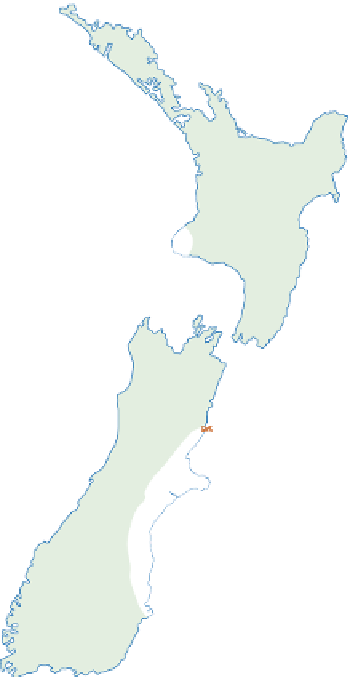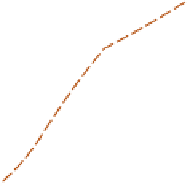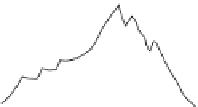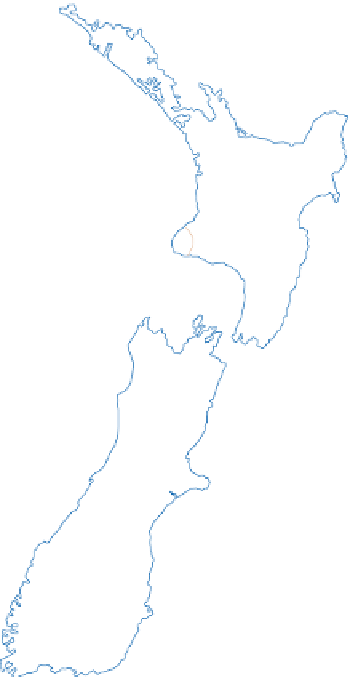Geoscience Reference
In-Depth Information
7DXSRYROFDQLF]RQH
1257+,6/$1'
1
1
1
1
6287+,6/$1'
6RXWKHUQ$OSV
6
6
3DFLILF3ODWH
,QGR$XVWUDOLDQ3ODWH
6
9ROFDQLF]RQH
'LVVHFWHG7HUWLDU\SODWHDX
6
0RODVVHDQGRWKHUVHGLPHQWV
0HWDPRUSKLF]RQH
6WULNHVOLSIDXOWV
2FHDQSODWHPRYHPHQW
0DJPDGLDSLU
NP
is a significant geomorphic agent, especially where ava-
lanches incorporate rock debris and are focused in
avalanche chutes.
Permafrost activity in the cryonival belt is
continuous
only on the highest summits and should be regarded as
sporadic
elsewhere, dependent on and contributing to
local factors in the geoecological mosaic. Frost weathering
plays a dominant role in eroding summit crests, producing
sharp
aiguilles
,
tors
and residual
blockfields
as interme-
diate stages in the gradual
altiplanation
of alpine summits
(
Plate 24.11
).
Seasonal supplies of frost-weathered
products form
stratified screes
below rock walls. Cryotur-
bation reworks mountain-top debris on broad summits
into patterned ground and contributes to downslope
movement in both areas. It is often more effective on
rockwall-foot talus slopes and reaches its climax in
rock
glaciers
, where ice forms a matrix for talus, found in some
arid alpine permafrost regions. Wind deflation of fine
debris is also a significant process in arid alpine zones.
Alpine slope development
The evolution of high mountain slopes is subject, like all
slope processes, to variation and much argument and
modelling (
Figure 24.15
).
There is, however, progressive
rock-wall reduction at the expense of a developing
talus/colluvial foot slope. Rock walls may be crowned by
peaks or broader crests, dominated by frost weathering
and shedding debris by solifluction and deflation. The
rock wall is eroded at average rates of 1-10 cm yr
-1
,two
to four orders of magnitude higher than the crest, which
it steadily consumes. Initial rock-wall height and steepness
depend on the extent of glacial erosion and rock-mass
strength. Angles exceed 45-50
in general, with major
cliff elements over 65
and main valleys 0·5-2 km deep.
Rock walls rarely extend continuously over this range and
may be stepped in response to structural features or
episodes of valley deepening.
Rock
falls
and rock
slides
eventually lead to rock wall
destruction, exploiting the inherently oversteepened and


































































































































































































































































